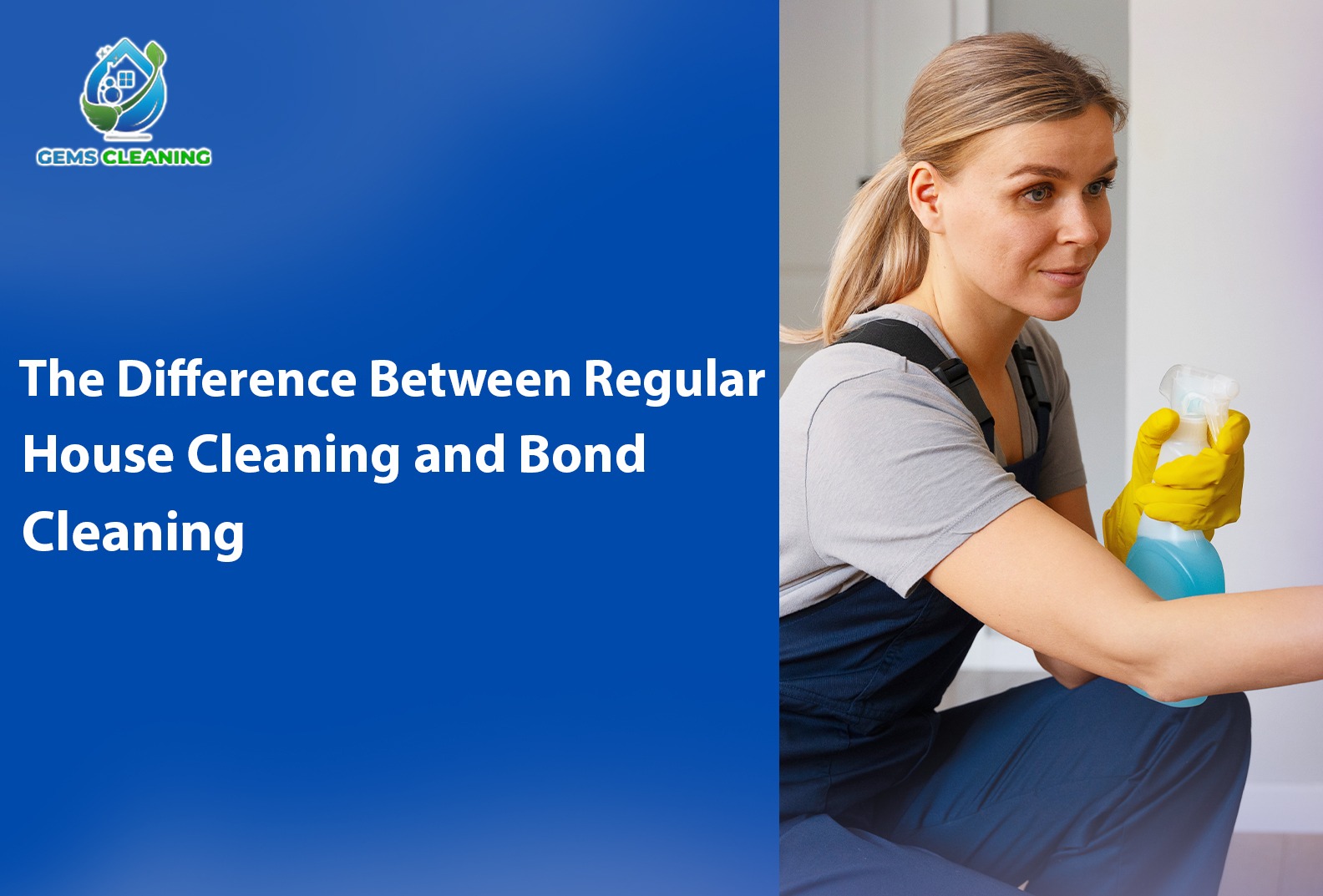blog
14 October 2025
If you’ve ever rented a property in Australia, you’ve likely come across the term bond cleaning or end-of-lease cleaning. While both bond cleaning and regular house cleaning involve scrubbing, dusting and disinfecting, there’s a world of difference between them in purpose, scope and outcome — especially when your rental bond (usually four weeks’ rent) is at stake.
Here’s what sets them apart and why it’s important to know the difference.
What Is Regular House Cleaning?
Regular house cleaning refers to the day-to-day or weekly cleaning homeowners and tenants do to keep a living space tidy and hygienic. It’s about maintenance rather than perfection.
A regular house clean typically includes:
- Vacuuming and mopping floors
- Dusting surfaces and furniture
- Wiping kitchen benches, sinks and splashbacks
- Cleaning bathrooms (toilet, basin, mirror, shower)
- Taking out rubbish
- Spot cleaning where needed
These cleans are designed to keep the home presentable and prevent grime buildup. Many people in Australian cities — especially busy professionals or families — hire regular cleaners on a weekly or fortnightly basis. According to IBISWorld, Australia’s domestic cleaning industry is worth over $13 billion and growing steadily as more households outsource routine chores.
What Is Bond Cleaning?
Bond cleaning, also known as end-of-lease cleaning or vacate cleaning, is a deep, top-to-bottom clean carried out when tenants move out of a rental property. The goal is to return the property to the same condition it was in at the start of the tenancy — allowing for fair wear and tear — so tenants can recover their bond in full.
Bond cleaning goes far beyond regular cleaning and includes:
- Cleaning inside and behind all appliances (oven, rangehood, dishwasher, fridge)
- Wiping cupboards, drawers, walls, skirting boards and doors
- Washing windows, sills, tracks and blinds
- Scrubbing tile grout and bathroom fittings
- Cleaning light fittings, fans and air vents
- Removing cobwebs and dust from ceilings and corners
- Steam cleaning carpets (if required by lease)
- Tidying outdoor areas, garages and balconies
Every state has its own tenancy laws — for instance, the Residential Tenancies Authority (RTA) in Queensland and Consumer Affairs Victoria both outline that tenants must leave the property in a “reasonably clean” condition. Failure to do so can lead to bond deductions or disputes lodged with the Residential Tenancies Bond Authority (RTBA).
Key Differences Between Regular Cleaning and Bond Cleaning
| Aspect | Regular Cleaning | Bond Cleaning |
| Purpose | Maintenance & hygiene | Lease compliance & bond refund |
| Frequency | Weekly or fortnightly | Once, at end of tenancy |
| Scope | Surface-level cleaning | Deep cleaning, every detail |
| Time Required | 1–3 hours | 6–10+ hours (depending on property size) |
| Checklist | Basic | Strict & comprehensive |
| Responsibility | Tenant or cleaner for general upkeep | Tenant must ensure compliance for inspection |
| Cost | $100–$150 for a small home | $300–$700+ depending on rooms & requirements |
Why It Matters
A regular clean keeps your home comfortable; a bond clean protects your finances. Property managers and landlords in Melbourne, Sydney, Brisbane and other cities often conduct formal inspections and use detailed checklists. Missing areas like oven trays, window tracks or light fittings could lead to a partial or full bond deduction.
Many tenants now hire professional bond cleaners, as they understand what real estate agents look for and often offer bond-back guarantees.
Think of regular cleaning as your routine maintenance — and bond cleaning as your final audit. If you’re moving out, investing in a professional end-of-lease clean can save you time, stress and disputes over your bond refund.











